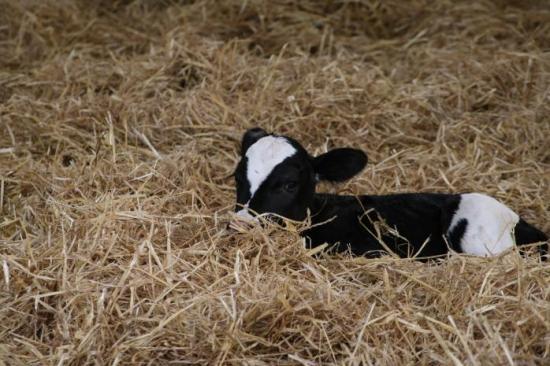Farmers Advised To Take Steps To Combat Late Spring
12th March 2018

Scottish farmers are being advised to take steps and plan fodder usage now, with experts predicting a late spring.
Using data from grass variety trials, specialists from SAC Consulting, part of Scotland's Rural College (SRUC), predict that T-Sum 200 - which indicates when soils have warmed sufficiently for grass growth to begin - will be two-to-three weeks later than normal.
This could lead to a variety of problems, including straw shortages, which could in turn heighten the risk of disease among newborn animals.
Basil Lowman, Beef Adviser at SAC Consulting, said: "A late spring couldn't be at a worse time. Not only are many farms already short of forage due to last summer's wet weather, which forced many stock to be housed much earlier than normal, but potentially as problematic is a severe shortage of straw to bed stock.
"Many farmers with suckler herds, block calving dairy herds and housed flocks time calving and lambing so that stock can be immediately turned out on to clean, high-quality spring grass. Being forced to keep animals indoors could pose a major additional disease challenge for newborn animals this spring. With a real risk of a late spring, it is best to plan now and minimise problems later."
Immediate steps livestock farmers can take to combat the late spring include:
Discuss with their vets what preventative treatments, for example vaccinations, might be sensible and cost effective
Sell trading stock as quickly as possible. Even consider selling all or some cattle store rather than finishing them
Prioritise bedding towards youngstock, especially newborns. For example, ensure a dry, well-bedded creep area is made available for new calves
Graze all grass and delay shutting fields up for silage. Consider grazing forward winter sown cereal crops with ewes and lambs or graze cover crops
Despite being counter intuitive, it may even be a sensible option to delay turnout for the earliest calvers and synchronise then artificially inseminate them indoors.
The remainder of the herd could be turned out to grass. This would reduce demand for silage and grazing. It would also allow the youngest calves, which are most susceptible to disease build-up, to be turned out with their mothers.
These later calving cows will also benefit from a longer transition in diet before cycling and breeding commences. Overall, this could help avoid an extended calving period often associated with a late spring. The early calving group can then be turned out to grass once they are over seven days inseminated.
Farmers seeking further advice should email beefandsheep@sac.co.uk
SRUC web site www.sruc.ac.uk
